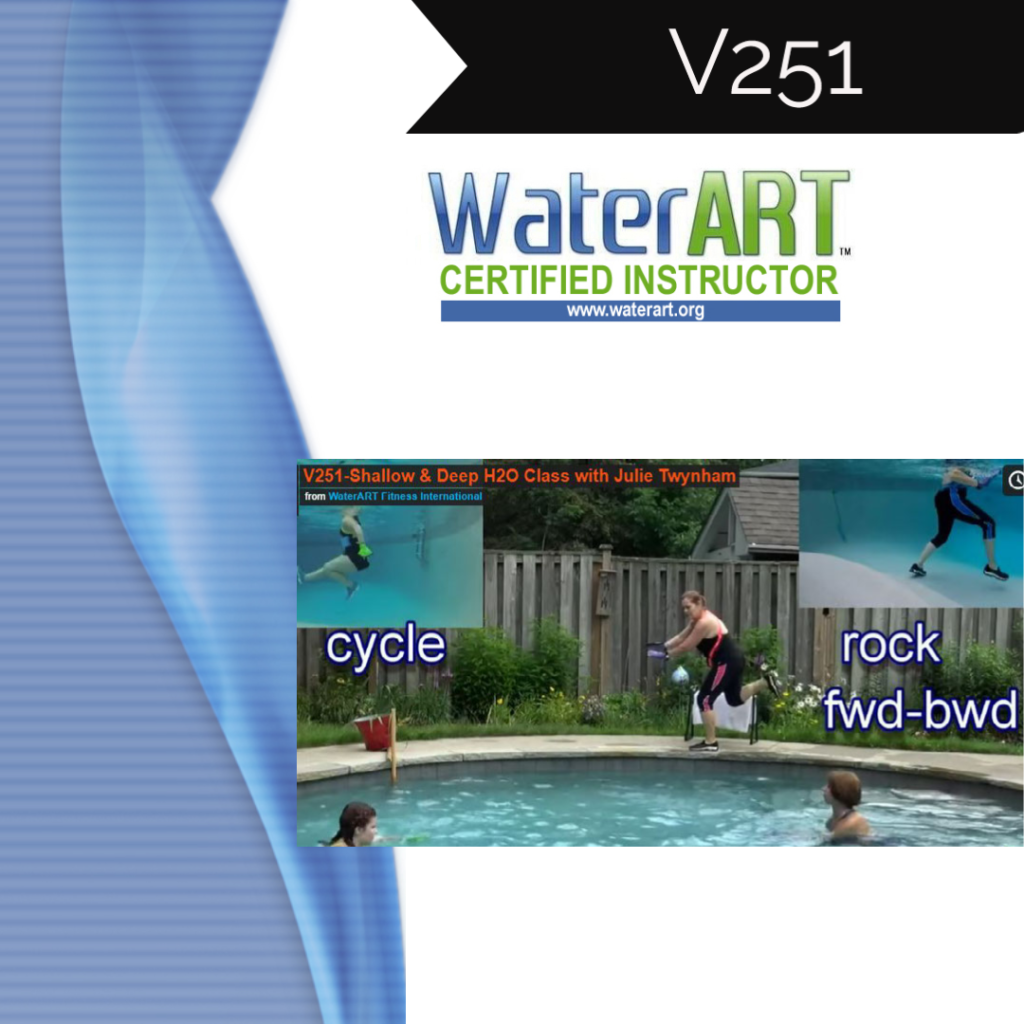Cardio respiratory endurance is defined as the ability to engage large muscle groups, dynamically or rhythmically, continuously or intermittently, at low through moderate to high intensity exercise. Exercise design in water for cardio should ideally be more than 3 or more minutes in duration to utilize the aerobic (oxygen energy) system. Shorter durations are possible but, because most participants take a longer time to master the moves correctly (to optimize the training goal), they may be rushed with less time. An instructor may program 45 seconds “move more intense” and then 90 seconds of easier recovery cardio training to maintain the flow of the program.
The main focus of cardiovascular training is to benefit the heart and circulatory system to prevent heart disease so cardiovascular intensity does not always need to be intense or “go hard” to benefit the body.
Cardiovascular Training will
1) Improve the strength of the heart and lungs with large motor movements.
2) Massage the heart for improved circulation and venous return.
3) Will help a person perform more intensity and total work while lowering resting heart rate by using progressive and interval training
4) Provide a release of endorphins that keeps people happy and feeling good through the program
5) Be an easier part of the program to teach (and have people follow).
Strengthening or stretching muscles with specific joint action is more challenging to teach properly and effectively since the specific joint action must be utilized to engage the muscle. Additionally, in water, the muscle must be worked against the buoyancy of the water or work against the resistance of the water to provide fatigue of the muscle.
In general with muscular strength using water, there must be a series of resistance exercises in which several “sets” of exercises are targeted to a specific muscle group with minimal rest between exercises.
Both muscular strength and endurance are developed by the overload principle – by increasing the resistance to movement (intensity) or the frequency or duration of activity to levels above those normally experienced. Muscular strength is best developed in the water by resistance training using resistance that develops maximal or nearly maximal muscle tension with relatively few repetitions.
Here are some Key Concepts of Muscle Strengthening:
1. Choose an muscle to strengthen and utilize the water for protection and added resistance.
2. Ideally utilize enough sets to train and fatigue the muscle or approximately 1-2 sets (with equipment) or 3-5 sets (without equipment) so that the intended muscle group works to a point of near muscular fatigue.
3. Utilize active recovery movements in between sets to help rejuvenate the muscle and add flow and variety to the routine.
4. Design a progressive program and be ready for beginner (easier non swimmer exercises) as well as seasoned advanced exercises for those who attend regular programs and may require more challenge.
5. Maintain a good breathing pattern. A participant who holds his/her breath can induce excessive increases in blood pressure. Therefore, always cue each participant to breathe throughout their exercise program.
6. Group exercise programs should try to incorporate 4-5 focused major muscle groups per class/program (minimally) so ideally this is 4-5 segments of 3-5 minutes specific to the muscle group being targeted. Use fun and filler to flow the program.
Things to Consider:
1) CV Training will not change a person’s shape as much as strength or sculpting the body
2) Muscular strengthening works to support the integrity of the joints
3) Adding variety to your programs will add more challenge (otherwise exercise becomes 30% more efficient -if you perform the same old routine).
Generally, a group exercise program should incorporate about 5 separate cardio conditioning sets of 3-5 minutes in duration to yield a balanced program (15-25 minutes of a 45 minute to an hour program). The TOTAL amount of work is of greater
importance than simply doing a program that only utilizes continuous training of cardio. This is largely attributed to the fact that, in water, a A person will benefit more with intervals or discontinuous sets because water temperatures are generally more variable than land training temperatures. Therefore, an instructor can utilize cardiovascular sets to maintain good thermal regulation. In doing so, they may keep the core temperature and consequently are better thermo-regulated as well as interspersed movements will help to dissipate the blood lactates or the bi-product of anaerobic work (which is typical with water exercise).


